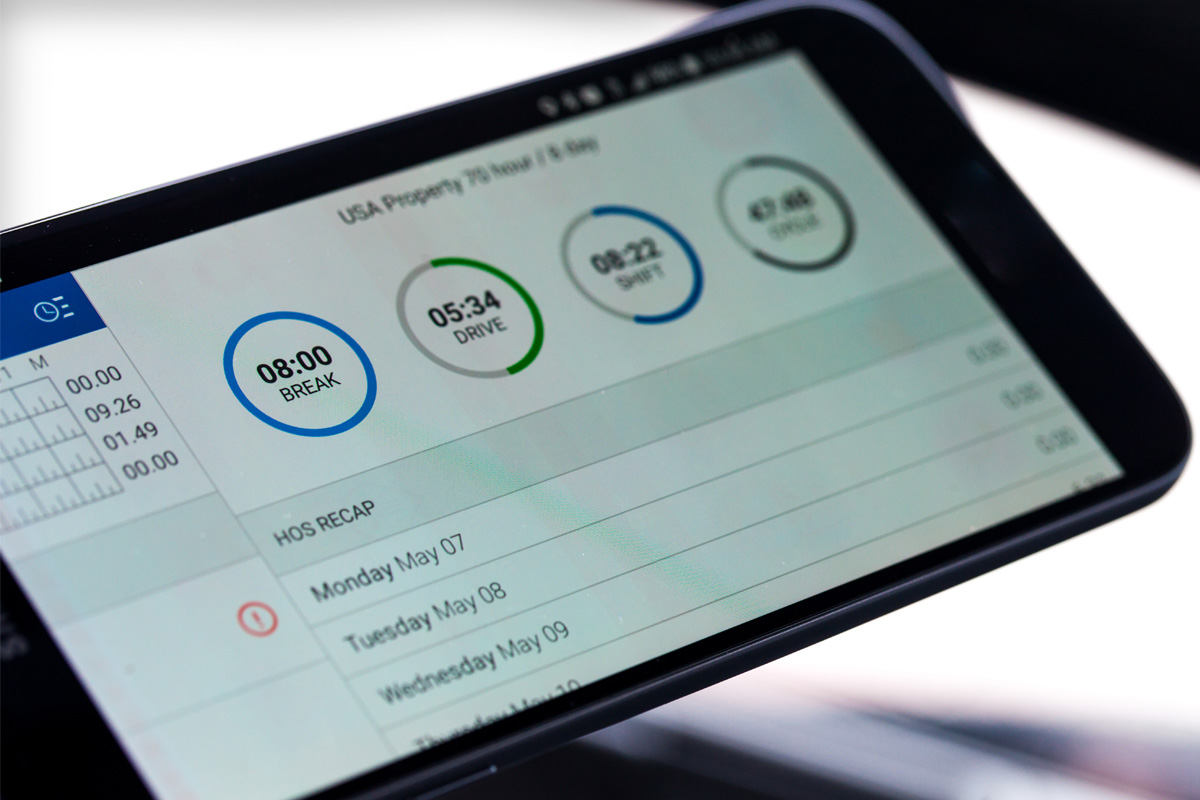ELDs can make truck driving safer and help fleet managers save money on clerical costs, fuel, insurance, and repairs. But what are they exactly, and who needs them?
In this comprehensive guide, you’ll learn everything about ELDs.
What is an ELD?
An ELD is an electronic device that monitors the hours of service of commercial motor vehicles (CMVs). These devices eliminate paper logbooks and speed up the process by automatically logging HOS data. Additionally, they reduce the risk of roadside inspection violations and IFTA tax penalties by making it easier for truck drivers to submit digital reports.
To avoid any regulatory complications, fleet managers must select an FMCSA-certified ELD. The agency maintains a list of registered electronic logging devices (ELD), but this does not necessarily mean all devices are compliant. It’s crucial to research the manufacturers of an ELD to ensure quality, reliability, and compliance. It also helps if the company has a customer support team to answer any questions.
What are the Costs of ELDs?
ELDs can be expensive to implement, but they save trucking companies money in the long run. They reduce the paperwork and resource involvement required to meet compliance standards and make IFTA filing more efficient.
In addition, they help fleets improve efficiency and safety by providing valuable data on vehicle maintenance and driver behavior. This information can be used to improve route planning and prevent breakdowns. It can also be used to coach drivers and improve overall driver performance.
When choosing an ELD solution, consider the price of the devices and the monthly fees. Additionally, check whether the solution supports “bring your device” (BYOD), which can be cheaper. Finally, look for an easy installation process. Devices with complex installation will require professional assistance, which can add to the cost.
What are the Benefits of ELDs?
ELDs offer many benefits to fleet managers, drivers, and businesses. They help reduce a trucker’s hours of service violations, improve route planning and dispatching, make DVIR filing more accessible and practical, minimize fuel waste, lower commercial insurance premiums, aid in vehicle diagnostics, and more.
Moreover, most advanced ELD systems incorporate more extensive fleet management capabilities like route management systems, fault-code generation, and GPS tracking. These features can help fleet managers proactively identify bad driving habits and discourage accidents, theft, or property loss.
What are the Pain Points of ELDs?
ELDs are a requirement for many truckers, but they still have some drawbacks. For one, using the system can be a pain, especially for new employees unfamiliar with it. Training drivers to use the system properly takes time, and some employees may feel uncomfortable sharing personal data with the company.
A high-quality ELD can help truckers maintain their records and stay safe on the road by providing tamper-proof evidence in the case of an accident. It can also reduce the risk of form and manner violations, missed log books, and other errors that could lead to poor CSA scores.
Additionally, some ELDs include features that make fleet operations more efficient, such as IFTA fuel tax reporting and real-time GPS tracking. These features can save dispatchers and office personnel valuable time by eliminating the need to call drivers for check-ins or manually review paper logs.
What are the Alternatives to ELDs?
ELDs replace paper logbooks to track regulated drivers’ compliance with Hours of Service rules and ensure fleet operations adhere to industry regulations. In addition, they provide real-time data on the vehicle’s engine movement and miles driven that can help fleet managers plan schedules and preventative maintenance.
Read Also: 5 Benefits Of GPS Fleet Monitoring Solutions
Keeping accurate records saves time for fleet drivers, improves safety, and helps reduce liability and fuel costs. It also enables fleets to be more competitive and provide better customer service.
When choosing an ELD, look for intuitive and easy-to-use software. Avoid systems that require in-cab hardware or charge more for add-on features like fuel or vehicle diagnostics.
